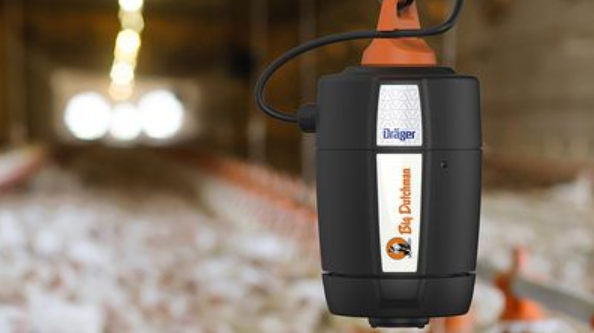



The DOL 53 ammonia sensor performed extremely well
Good news from the USA: independent trials of the renowned University of Georgia have confirmed the high accuracy of the DOL 53 ammonia sensor.The Big Dutchman group is the exclusive distributor of this sensor developed for use in animal husbandry. The DOL 53 sensor permanently measures the ammonia concentration in the house air.
The trials were conducted by the Department of Poultry Science at the College of Agricultural and Environmental Sciences of the University of Georgia in an approx. 12 x 152 m (40’ x 500’) large, closed broiler house. The scientists completed a total of four trials. Their final report confirms that “the DOL 53 ammonia sensor performed extremely well in initial poultry house field trials”. The University’s study DOL 53 Ammonia Sensor...A First Look is now available.
Healthier birds
Farmers can use the data collected by the sensor to create the ideal climate in their barn and to prevent negative effects on bird health caused by too high ammonia concentrations. Big Dutchman product manager Heinz Südkamp names some advantages connected to a good environment with low ammonia levels: “Our customers have healthier birds, more welfare in their barns and thus better results.”
High ammonia levels strongly affect bird health. The list of negative consequences (F.N. Reece et. al., 1980, D.M. Miles et.al., 2004) is long:
- two to 19 percent weight reduction in broilers at 28 days of age (with ammonia levels between 25 and 50 ppm);
- significantly lower uniformity and breast meat yield in broilers at 28 days of age (with ammonia levels between 25 and 50 ppm);
- reduced feed conversion;
- higher risk of diseases: Too much ammonia in the air can damage or even completely paralyse the cilia in the birds’ trachea. These finger-like projections trap pathogens and therefore play an important role in the birds’ immune system. If the cilia do not work as required, the broilers get sick more easily.
The sensor is easy to connect to the climate controller and continuously provides data. Poultry farmers thus always know the ammonia levels in their barns and can implement measures for correction early on if they detect any issues.
Another benefit: in contrast to other sensors available on the market, the Big Dutchman sensor is resistant to the harsh conditions in the barn, such as temperature and humidity fluctuations or harmful gases that might reduce its accuracy. Click on the link below for more information on the DOL 53 sensor (web article “Poultry climate control: New sensor is a milestone for poultry production”).













